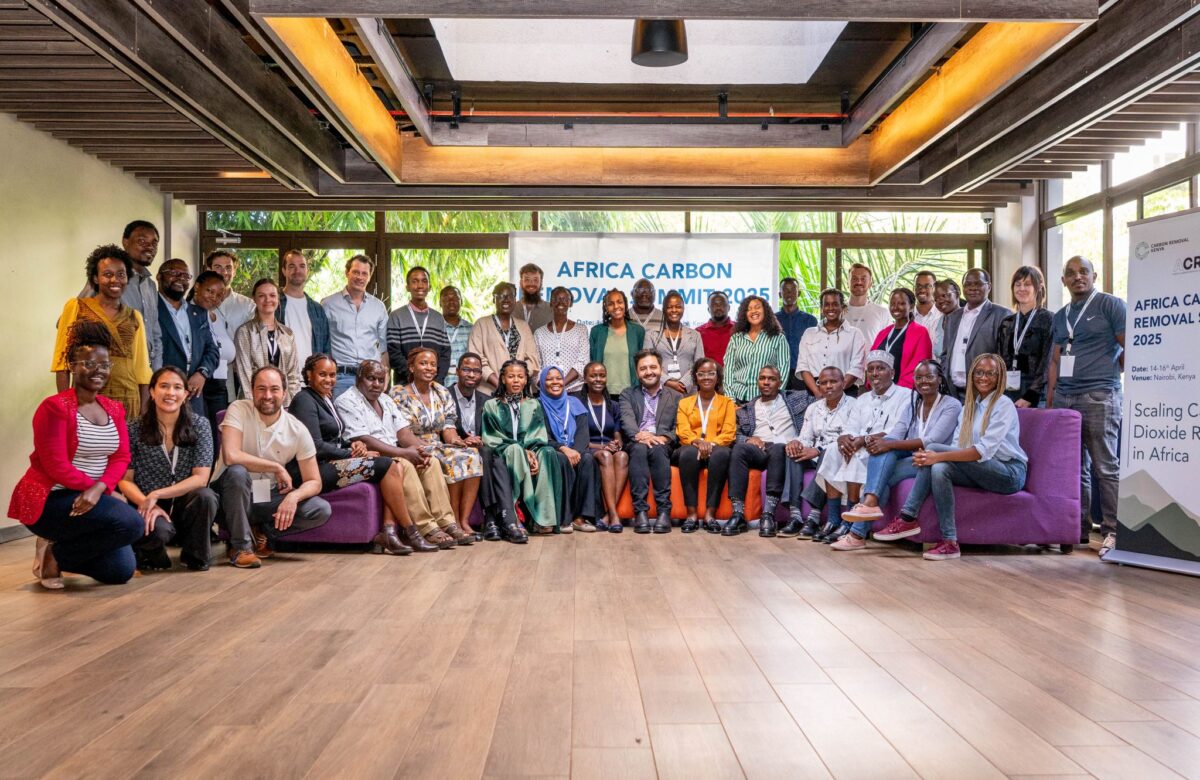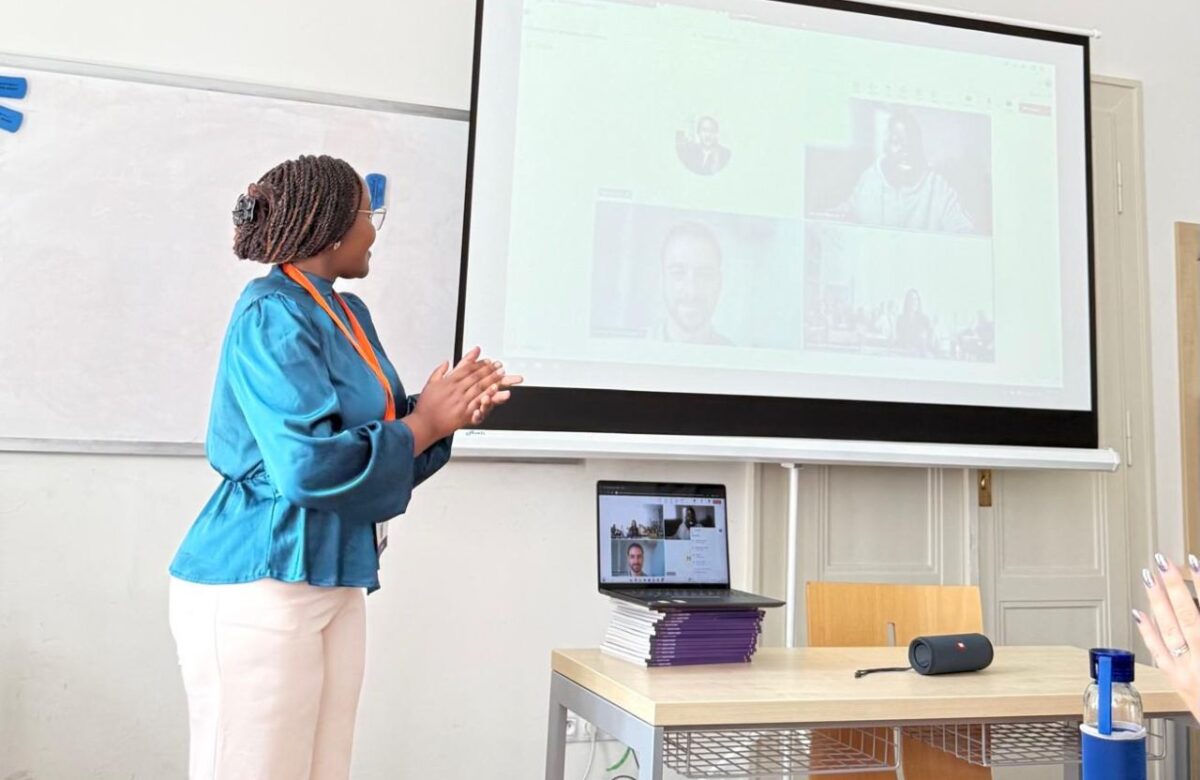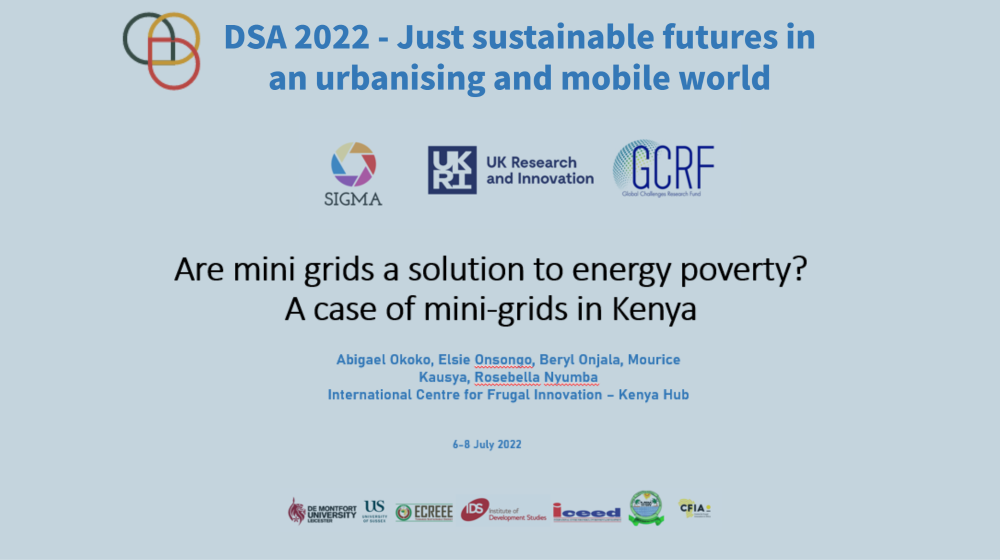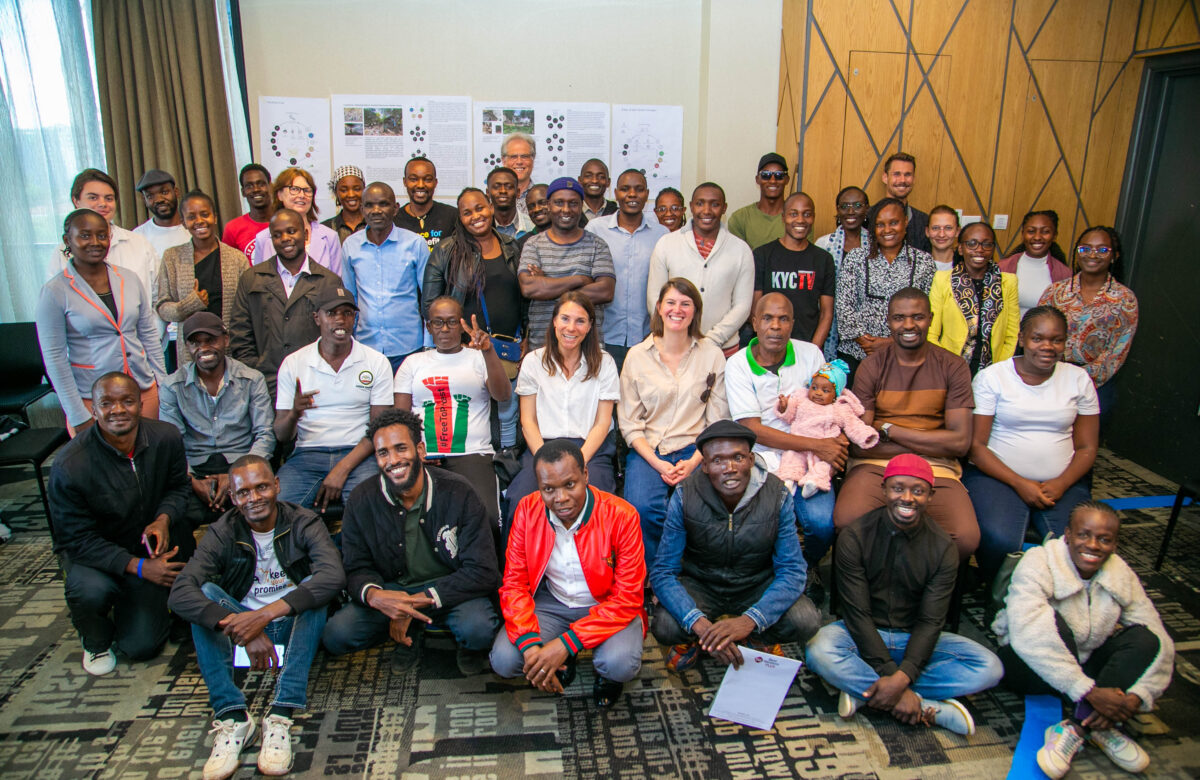Background
This workshop that took place on the 27th March 2024 builds up on a previous study on ‘Digital platforms and household resilience’ specifically seeking to explore how digital hubs can improve livelihoods and the quality of life of residents of Nairobi’s informal settlements. The first co-creation workshop focused on digital exclusion and needs in Mathare, digital activities to support target groups and risks, visit to the California digital hub and a co-design of the hub session which produced sketches and drawings of the visioned hub.
The purpose of this second workshop was to deepen discussions with community members, ICT Authority of Kenya (ICTA), Mathare Special Planning Area Research Collective (MSPARC) and other relevant stakeholders around the digital and non-digital -services and functions, operations, and management as well as the sustainability aspects of the proposed digital hubs. This is timely as it aligns with ICTA’s plans to establish village digital hubs across all the wards in Kenya.
The workshop was kicked off by a presentation of the key findings from the interviews conducted in February 2024. This also featured the support and work of community researchers from Ghetto Foundation. Community researchers are activists who use (academic) research as a tool to better understand problems and look for solutions within their communities. Their aim is to conduct research from the grassroots to assist external technical researchers in addressing the issues in Mathare from the people who have experienced them.
The community pointed out that their digital needs were access to information, CBC learning, digital literacy and online marketing as well as accessing social media and other entertainment sites.
Findings from the Fieldwork
Based on the analysis from the previous research and the workshops, there were eight target groups identified to be involved in the second phase of the digitalization study namely: CBOs, local administrators ,community health promoters (CHPs), alternative providers for basic education and training (APBETs) /education providers, SMEs and informal workers, PWDs, elderly persons, youth and artists, household heads and men/women. The primary aim of the data collection exercise was to identify the different target groups’ digital needs, the kind of services they would like incorporated in the digital hubs to be responsive to their community needs and how they envisioned the governance and institutional set up as well as sustainability strategies.

The community pointed out that their digital needs were access to information, CBC learning, digital literacy and online marketing as well as accessing social media and other entertainment sites.
However, some of the challenges that they encountered in meeting their needs were high costs of internet and other digital services, limited access to places with the services, unreliable electricity and digital illiteracy. It therefore made sense to them that the hub would be significant in fostering access to the internet and digital services, encouraging self-learning, providing access to information, enhancing CBC education, promoting online jobs to benefit the youth, and creating safe spaces for learning.
Participants further proposed ancillary activities and facilities including having spaces for sports and indoor games, spaces for doing businesses such as cafeterias and restaurants, day care activities, and spaces for community (social) meetings.
Validation of Digital Models and Prioritization of the sites
During previous co-creation workshops, participants developed sketches outlining their ideal models of digital hubs. The models were modified and exhibited during the workshop. These models were designed with multiple purposes in mind, including an open-plan digital room, a dedicated digital space for individuals with differing abilities, and a children’s play area to encourage visits from parents with young children. Additionally, the main building of the site includes service rooms and an administration block. Supplementary facilities consist of an e-learning center for training purposes, a cafeteria, a study room, and a cyber space. Alternative models also include a library and social hall. These diverse functions aim to facilitate various activities simultaneously and accommodate a range of digital uses.
Participants also engaged in in-depth discussions regarding the proposed sites and their suitability for the development of the proposed hubs. These discussions covered various aspects such as the location, tenure, and availability of infrastructure within the sites. The aim was to assess the feasibility and potential challenges associated with each site.

Digital Hub Services
During this session, participants were divided into three groups to prioritize and discuss three main digital and non-digital services for the model hubs. The selected digital services include digital literacy training, digital employment coaching, access to digital services, and access to government services. Non-digital services comprise games and sports, guidance and counselling, and community dialogues.
Sustainability of the Sites
The workshop concluded with a plenary session focused on the management and sustainability of digital hubs, guided by the following questions:
What is the source of funding, and how will the hub be managed?
The key takeaway from this session emphasized the importance of including all stakeholders (community stakeholders, non-governmental organizations, and government stakeholders) through a multi-agency approach. It is crucial to have all stakeholders present in the process to ensure sustainability.
The session also highlighted the significant role of the personnel appointed to manage the hub. This entails the establishment of two committees: the Management Committee and the Maintenance Committee, each with specific roles and responsibilities. These committees must include the vision bearers of the digital hubs and all government actors involved in the establishment and operation of the hubs. The Management Committee will oversee the strategic direction and day-to-day operations of the hubs, ensuring that they align with the vision and goals set forth. The Maintenance Committee, on the other hand, will be responsible for the upkeep and maintenance of the hub facilities to ensure their functionality and longevity. It is essential for these committees to work collaboratively to achieve the objectives of the digital hubs and to involve all relevant stakeholders in the decision-making process.

Conclusion
The workshop aimed to clarify and establish a strategy for the development of digital hubs in Mathare. The key takeaway from the workshop was (I) the democratic process taken to arrive at one preferred location out of the four proposed sites from the previous workshop and (ii) the identification of risks associated with the implementation of these hubs. Specifically, the focus was on how to effectively manage the hubs to ensure they serve their purpose in bridging the gap in access to digital services in Mathare. This emphasized the necessity of developing a comprehensive management plan that involves all stakeholders, ranging from government entities to community members and a clear definition of roles and responsibilities assigned to each of the stakeholders.
Story by: Diana Mwau, Bosibori Barake and Stephen Nyagaya
Related News
Physical Address
No. MK088, Ushindi West Avenue,
Mukuyu Rd (Mukuyu West Wing), Thome 1
Nairobi, Kenya
Organization
Subscribe for newsletter & get news, events and publications updates
Contact Us
Office Tel: (+254) 20 8009928 |
Mobile: (+254) 706 324 467
© 2026 Nuvoni Research







